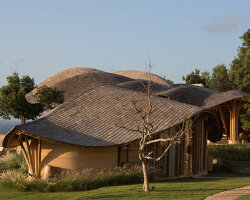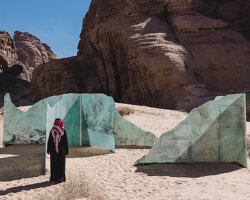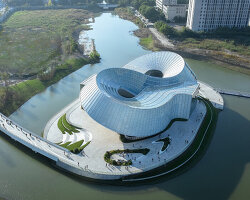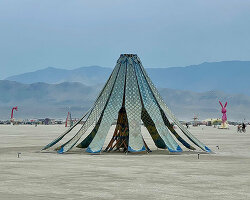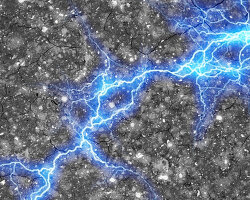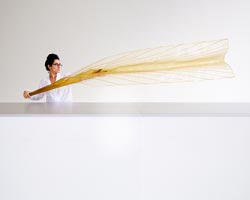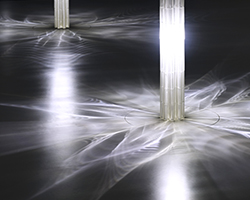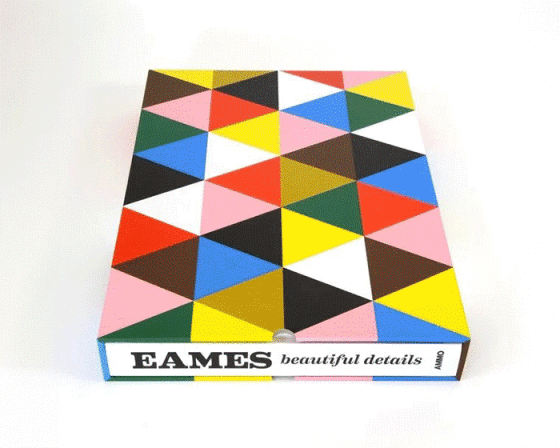with earth’s biodiversity under momentous threat, the mediated matter group — a team of MIT researchers led by neri oxman — has been in search of materials and chemical substances that can sustain and enhance biodiversity across living systems. one such substance is melanin, a pigment found in skin, hair, and eyes as well as in feathers and butterfly wings. the pigment, which is now considered by some to be more valuable than gold, has been found in fossils from some 160 million years ago, and today can be chemically synthesized with modern techniques. ‘our goal is to provide insight into this common yet extraordinary pigment and to shed light on its role for supporting life on earth in the age of synthetic biology,’ says the team.
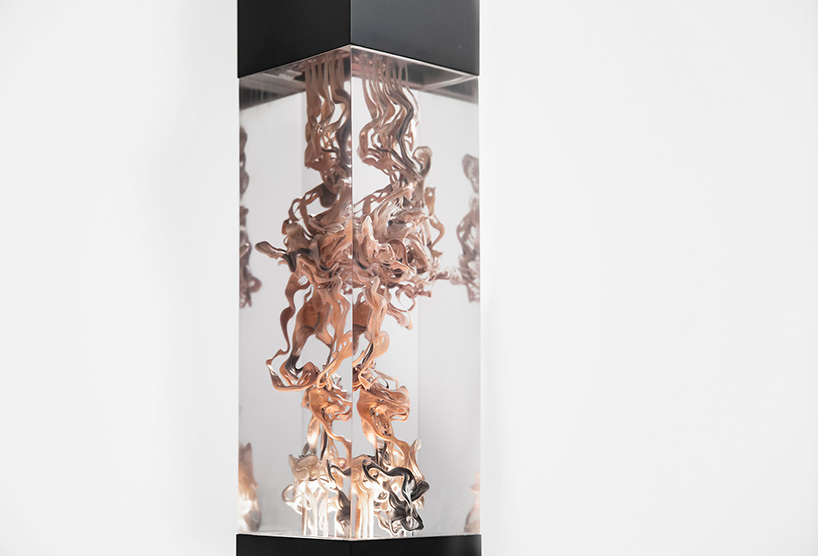
image and video courtesy of the mediated matter group
the mediated matter group conducted a series of experiments where melanin was created in three ways: chemical synthesis, where it is synthesized through a reaction between an enzyme from a mushroom and the protein building block L-tyrosine; extraction, where the pigment can be extracted from bird feathers and cuttlefish ink, before being purified and filtered; and bacterial synthesis where the genes for melanin production are engineered into bacterial species, such as escherichia coli, and thereby controlled though recombinant gene circuits over space and time, and in response to changes in the environment.
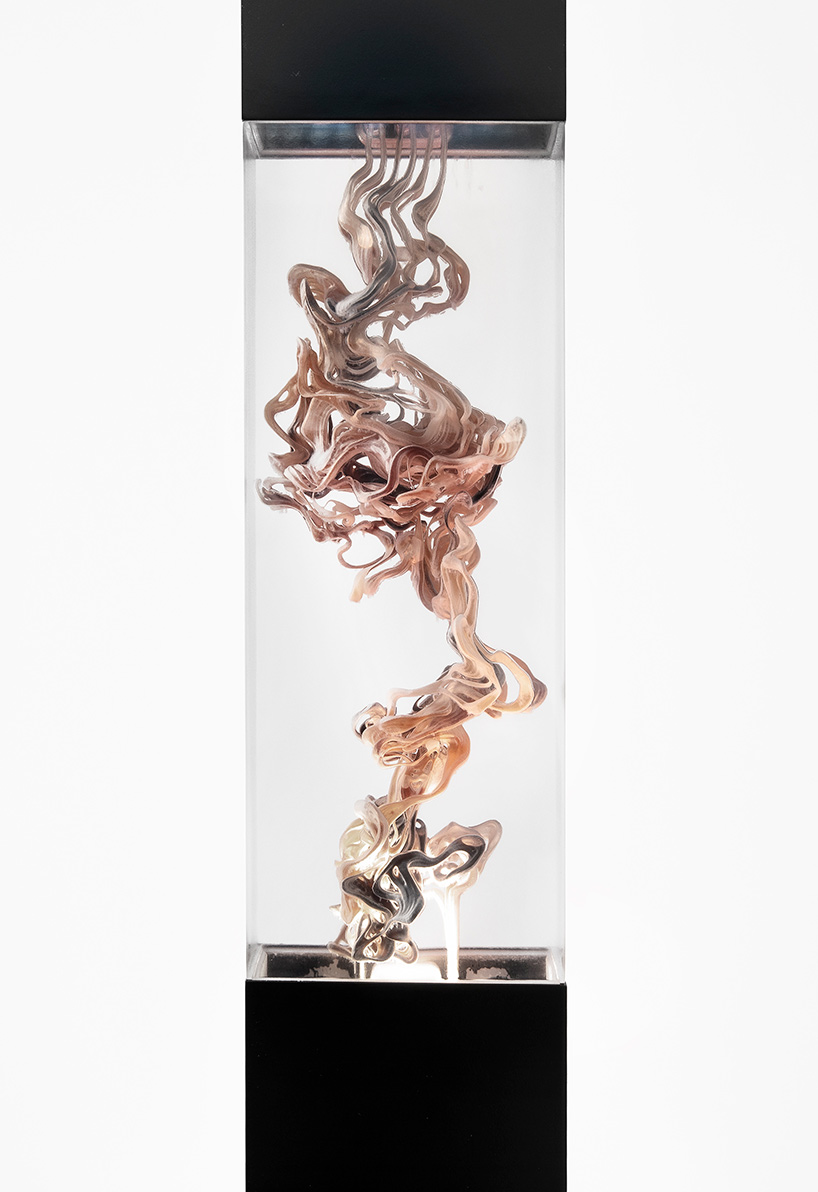
image courtesy of the mediated matter group
as part of the research behind ‘totems’ — a project commissioned by la triennale di milano for its ‘broken nature’ exhibition — the mediated matter group created a series of spherical objects featuring a single or multiple connected channel filled with liquid melanin. ‘these ‘orbs’ display a wide range of colors and absorption spectra, from yellow to darker tones,’ the team explains. ‘the channels have been computationally ‘grown,’ additively manufactured, and biologically augmented to create pockets from millimeter to centimeter scale for enzymatic liquids to reside.’
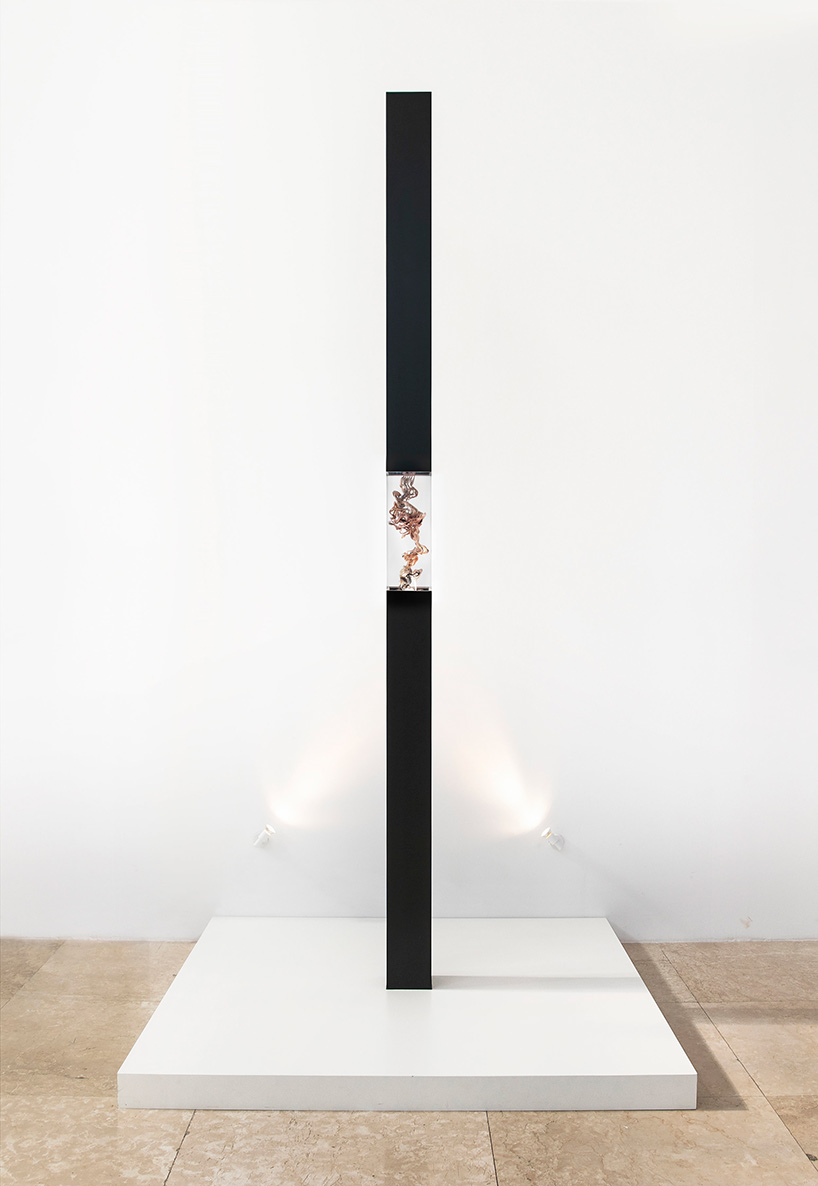
image courtesy of the mediated matter group
meanwhile, the installation designed for ‘broken nature’ features a demonstration of melanin production on an architectural scale for deployment in specific environmental contexts. the research fused digital fabrication and design computation with chemical reaction dynamics, resulting in a ‘chemical totem’. ‘each structural embodiment — a biological totem — is initiated with the introduction of tyrosinase, an enzyme that leads to color formation that continues over the span of a day, deepening as the sun reaches its zenith,’ describes the mediated matter group. ‘in this way, the demonstration is a ‘window’ that provides protection from, connection to, and transformation of sunlight.’

image courtesy of the mediated matter group
the project culminates in an architectural proposal for an environmentally responsive melanin-infused glass structure, which has been designed to contain multiple types of melanin. wrapped in a biologically augmented façade, the structure is designed to mirror and protect endangered species on site and to celebrate the diversity of life on our planet. the proposal is part of a project initiated by ravi naidoo of interactive africa and was first introduced by neri oxman and the mediated matter group at design indaba 2018.
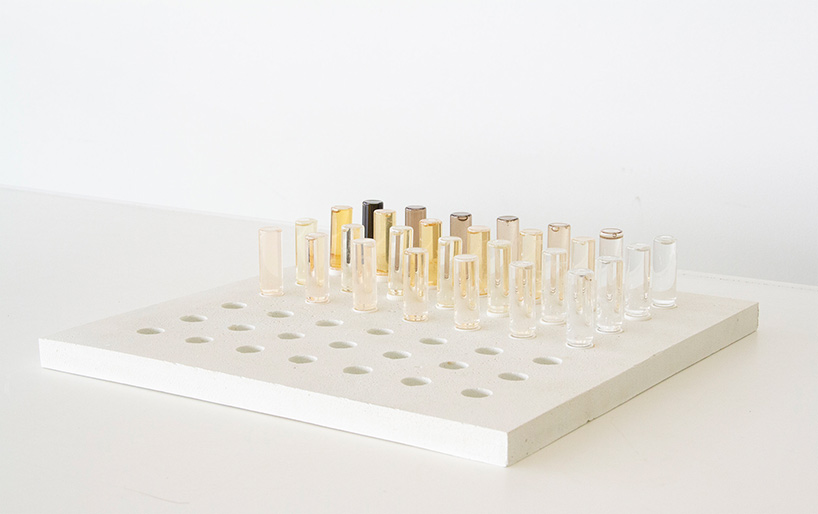
image courtesy of the mediated matter group
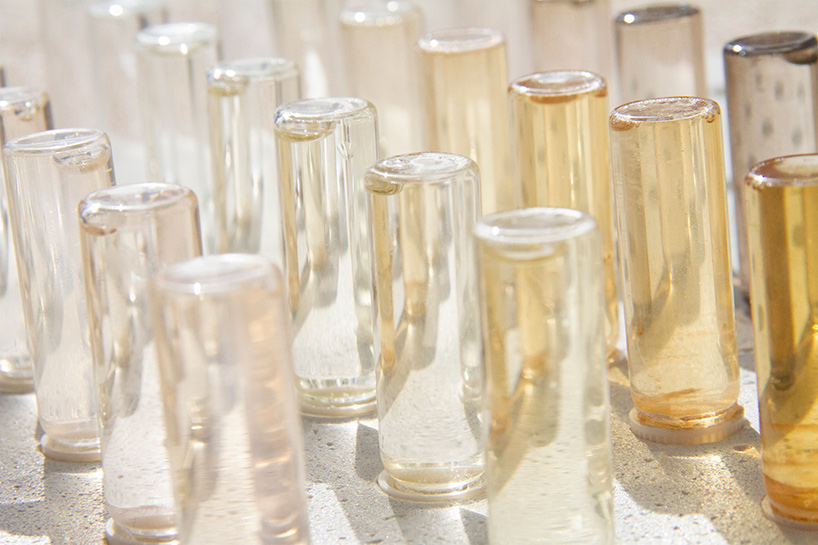
image courtesy of the mediated matter group
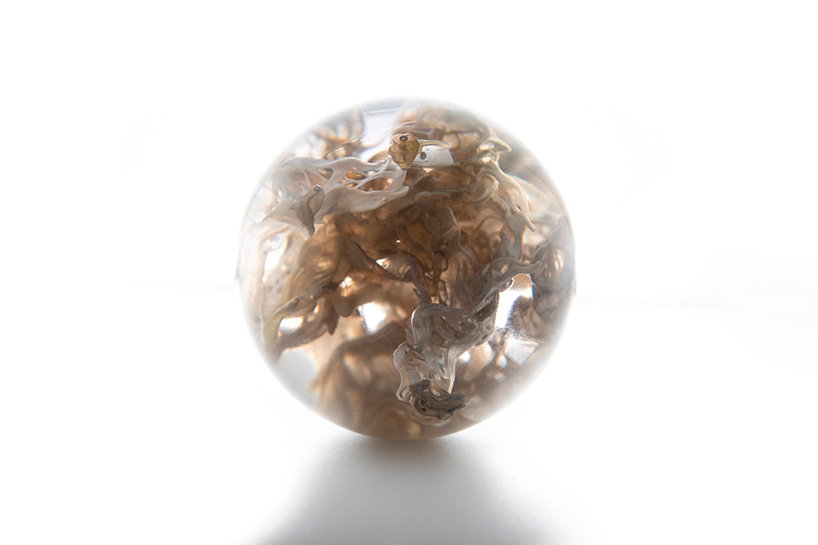
image courtesy of the mediated matter group
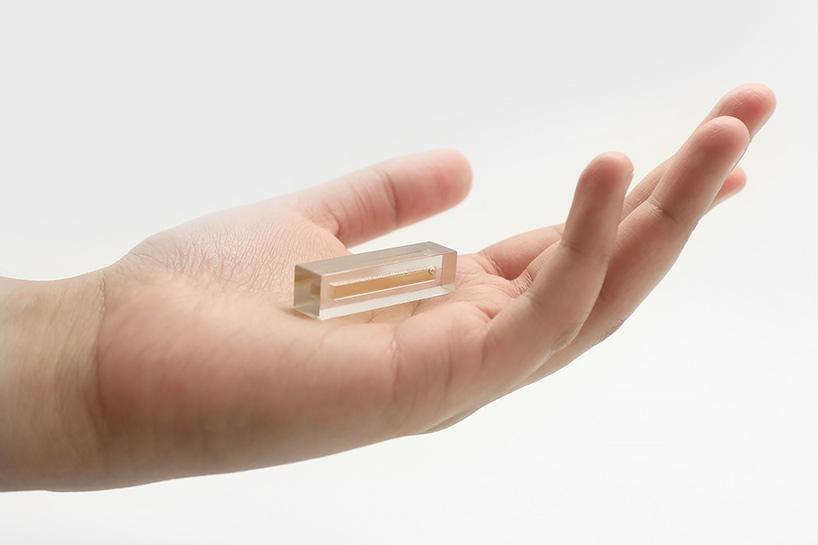
image courtesy of the mediated matter group
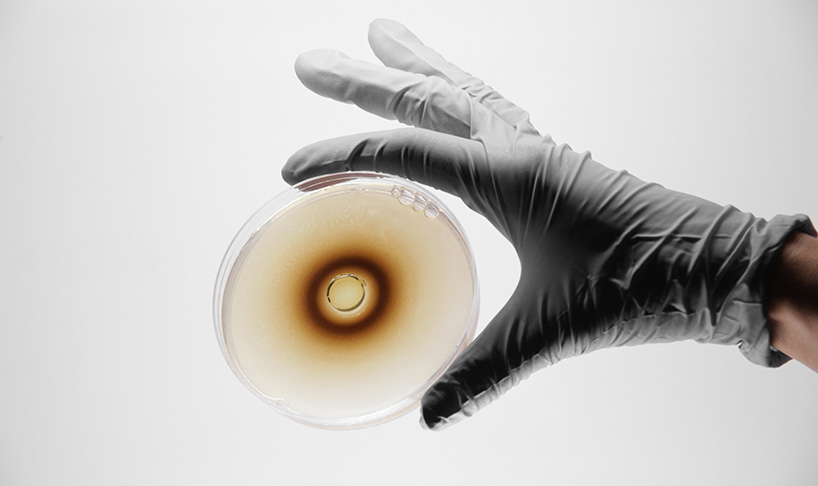
image courtesy of the mediated matter group
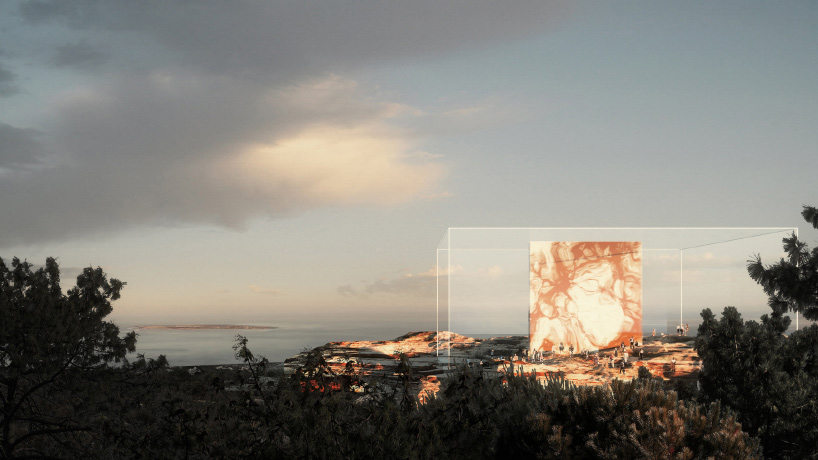
image by eric de broche des combes, luxigon, courtesy of the mediated matter group
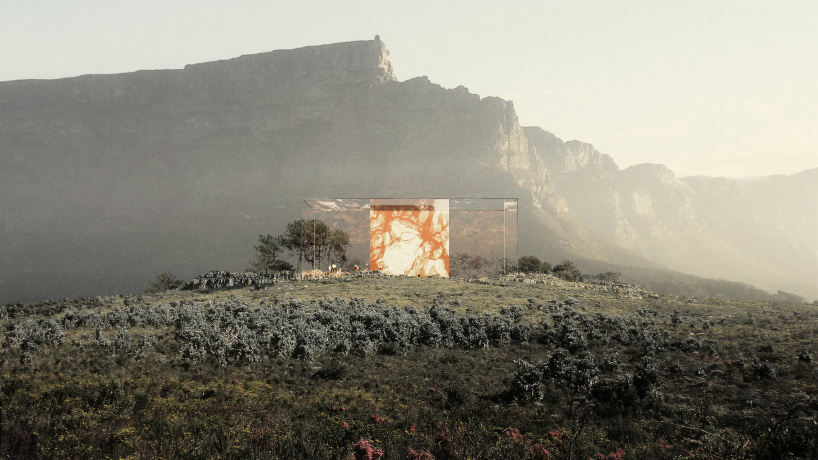
image by eric de broche des combes, luxigon, courtesy of the mediated matter group
project info:
the mediated matter group: sunanda sharma, christoph bader, rachel soo hoo smith, felix kraemer, joão costa, joseph kennedy, joseph faraguna, hans martin pech, susan williams, natalia casas, prof. neri oxman.
fabrication: FRONT, inc. BODINO. STRATASYS, ltd
bacterial strains: dechuan meng, MIT. prof. christopher voigt, MIT
on-site photography: gianluca di ioia
video: the mediated matter group
renders: eric de broche des combes, luxigon
installation production: kelly egorova
music composition: osvaldo golijov, excerpts from mariel (1999) for cello and marimba
acknowledgments: NOE, LLC.. design indaba, front, inc., MIT media lab, STRATASYS, ltd., robert wood johnson foundation, estée lauder, GETTYLAB, the XXII triennale di milano
commissioned by: broken nature: design takes on human survival, curated by paola antonelli, the XXII triennale di milano march 1 through september 1, 2019

